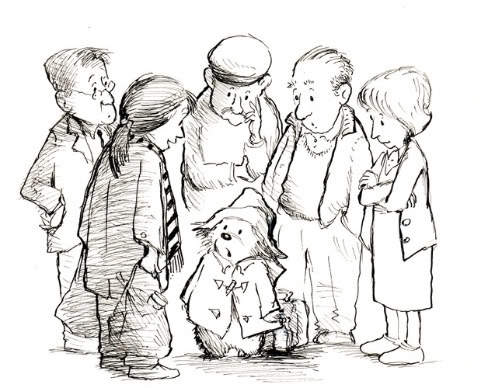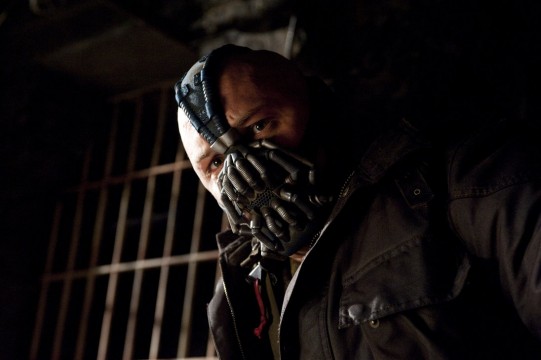*SPOILER Warning: Plot spoilers for both films below video. Go and see them both before reading. They’re both worth it.*
I saw the third instalment of the Hunger Games franchise Mockingjay yesterday and just got back from seeing the latest incarnation of children’s literary favourite Paddington at the cinema. I thoroughly enjoyed both but not simply as sheer spectacle but they both had some subtle and not-so-subtle critical points to make on western history and on modern politics that I was nothing short of delighted to see. They are both worth the price of admission at the cinema and certainly worth a look when they get released on DVD/Netflix as they are both action packed and rather fun but equally far more intelligent than they are being billed.
Starting with Mockingjay is easiest at its politics are the most obvious parts of these films. It is a really rather open attack on American domestic and foreign policy, its use of media and its dehumanising effect on a populace and a stringent and almost enforced class disparity. Contrary to what a woefully inept critic said in the Guardian not so long ago (whose protest seemed to be so dogmatically old school and anti-populist he came across far more as a Tory than any kind of ‘lefty’) this is not purely an attack on the state its an attack on a set of values now inherent in modern politics and society. This kind of questioning, especially when aimed at the young, should be endlessly encouraged and not whinged about for not picking a target you dislike more. HOWEVER, in this particular part of the Hunger Games series something leapt out at me far more strongly than its anti-westernising ideology; its historical political narrative.
Mockingjay Pt.1 has a very neat set of historical references throughout that compound its initial message that to my eye (and ear) were far more than its tubthumping neo-liberalism (which, again, I like). What brought this to my attention in this film more than the others, was the music. A frequently used fiddle is heard at key moments, the sort of folk fiddle sound you would associate with the American west, certainly at the time of the American Civil war. Katniss’ return to the Victor’s Village at two different points in the film compounds this music with set design. Having recently toured the MET in New York (*CLANG* sorry that was a name I just dropped…) I was particularly interested in the American history section. They had several mockups of mid-19th century households, something near immaculately replicated by the set designers in Mockingjay. Plush 19th century furniture, raggedy work clothes as seen in many photos of the period, wood slat and Queen Anne houses and victorian pastoral scenes are all depicted in the film. Taken together with the western swing style fiddle and the beautifully orchestrated a cappella work song (performed very well by Lawrence) this comes over as an overt commentary. Combine this with the notion of districts being fired upon, especially District 13 depicted as a ‘fort’ which is often seen as the start of the Civil War when Fort Sumter was fired upon. Compound that with the depictions of the districts (certainly in the books) as being populated by different races, most obviously the district from which Rue comes has a nearly all black population. The very notion of each district as slaves, be that logging, coal mining or road/railway building is inescapable in its parallels with the Civil War.
Another interesting note is that the supposed ‘good’ side of the rebels is not depicted in a favourable light either. Totalitarian, grey and uniform is admittedly the exact reverse of the gaudy Capital but is equally depicted as not exactly an ideal replacement for the gross indulgence of the Capital. This again is a major theme in both the films and the books but the commentary of the literal Capitalism of them is often brandished by its fans and detractors far more than their criticism of the mad, communist utilitarianism of the rebels. Coyne is just as vindictive, steely eyed and (as Pt.2 will no doubt reveal) just as heartless as President Snow. This is perhaps a more subtle sub-text but very much there in District 13’s lack of amusements, prescribed quarters, use of literally ‘red’ propaganda, brutalist architecture and dislike for cats (…you get what I mean). Most notable for me was wonderful character beat between the late Philip Seymour Hoffman and Elizabeth Banks where he tells her ‘the door is unlocked’ to which she replies there is nothing out there for her. Very much a parallel to the communist notion of ‘do as you will’, the notion that restrictions are not placed upon the populace but upon their belongings and allowances. I may be taking it too far when I point out the exciting yet hushed finale is played out under bright RED lights but mise en scene is a powerful cinematic device too and no imagery is innocent.
Put together this creates an actually rather sophisticated extension of the film’s political criticisms making the Hunger Games franchise a series that I hope will warrant further critical study in the future and mass appeal for many generations. To say nothing of Lawrence’s genuinely all-encompassing performance. The woman’s a marvel. Paddington’s political merits, however, are somewhat more implied.
Other than it being a really lovely, old fashioned fable of family and friendship, set against a Mary Poppins back drop of America-friendly London, Paddington came across as a rather determined stand against the rise of the Modern Right. With UKIP now having a seat in parliament the complete implosion of the Liberal Democrats, not to mention the slow ‘Rightification’ of Labour and an unelected Tory government, right wing politics – as the Hunger Games argues – seems to be the norm today in our mass globalised world. A hot button topic going hand in hand with this the world over is Immigration. UKIP itself stands (or sits) on this one issue almost and the fact they now have a voice in government should worry us all and amazingly enough Paddington spells that out for you.
A Bear Called Paddington was written by Michael Bond in 1956 and the eponymous character’s now famous introduction was prompted by very real events. During the second world war children were evacuated from their homes in London and sent to the countryside for safety away from notorious bombing sites to live with rural families. In addition to this the film makes it clear many european families were separated during the war too, many also sent to England to escape the conflict, in particular – Jewish families. And we all know why they didn’t want to hang around Europe at that time… The film explains this in great detail, even giving it its own little animation that reminded me of the Three Brothers fable that struck me dumb in Harry Potter. But Paddington goes even a little further.
Every nation on earth is built on immigration and humanity’s evolution depends on a diverse mix of our various cultures and creeds, the utterly asinine rhetoric spouted by the Nu-Right attempts to undermine or disprove this by indirectly promoting a fictitious type of National Purity where only a poorly defined idea of a ‘British Person’ may reside on our shores. That may sound hysterical but that really is the ground politicians are fighting on right now. Throughout the film Paddington is resolutely portrayed as a refugee: his home in darkest Peru is destroyed, he stows away to reach London and arrives with nowhere to stay. It does not patronise and even makes a rather satirical joke of the sort of deplorable conditions immigrants can be left to suffer in: Paddington says he will sleep in a bin for the night near the beginning and is later seen sleeping rough on a bench in the rain. London is not initially depicted well at all: commuters ignore the talking bear, pickpockets roam the streets and Mr. Brown is immediately depicted as the kind of ‘pull-your-socks-up’, old school tie Tory I loathe, sniffing at Paddington’s homeless state, calling him a liar, demanding his children lock their doors, etc. But by the end Paddington’s differences are embraced and incorporated by the Brown family, making them far better people and the immigrant Paddington notes “London is a place where anyone can fit in” and “whilst I’m not from here, it feels like home”. Of all the carefully structured heartstring tugging moments that one got me. Yes, Britain and London are places where anyone can fit in, whatever your colour, creed or nationality. Diversity is what makes any country tick and contributes to a rich, interesting and broad cultural pot I am proud to call my home nation.
I admit Paddington and Mockingjay both miss a few things in their keeness to state their case. For a multi-cultural London there aren’t that many people who aren’t white seen there, similarly in Mockingjay despite the token black guy its a pretty WASPy film and even the slummier parts of London are coated with a nostalgic Victorian sheen. These small quibbles aside both film’s hearts, and more importantly – their wallets, are in the right place: their mouths. It appears the most compelling opposition in modern politics comes from the cinema.
With a general election just around the corner in the new year and immigration a key point in every party’s manifesto, a film with Paddington’s box office pull and no doubt due for home release in the spring near election time, it could not be more of an obvious protest against the current political landscape. It is a great fun family film with laughs aplenty and a lot of heart but more importantly it carries with it a warning from history in the same way Mockingjay does: its never those who seek power that change lives, it is those closest to us that do and can do so in the smallest of ways. Ways like volunteering for a sibling or offering a bed for the night. Or simply a helping hand.
To deliberately mis-quote our unelected Prime Minister: We are in this together, they aren’t in it at all.



